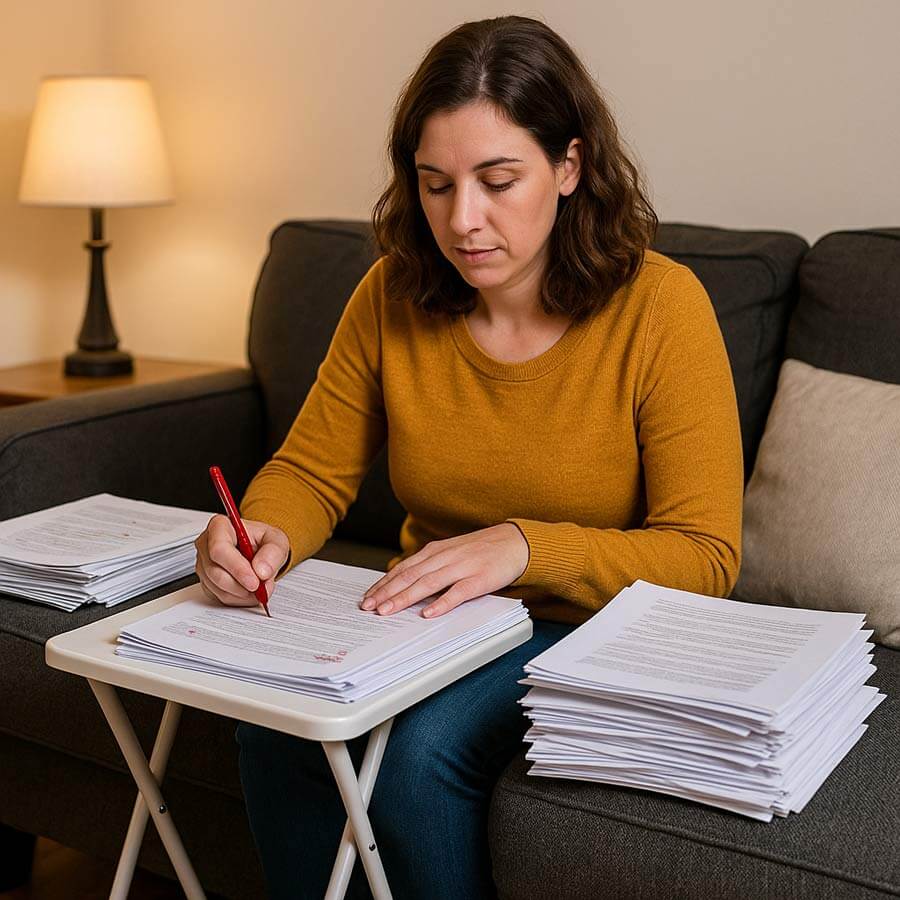Teaching has always been a demanding profession, but in today’s classrooms the hidden toll is higher than ever. From heavy bags and long hours on their feet to mounting stress and workstation setups that aren’t designed for comfort, teachers are facing physical challenges that can quietly build into lasting problems. At Bence Chiropractic, we see many educators in our office—and their stories highlight just how important prevention and care can be.

The Hidden Toll of Teaching
Teachers carry a unique weight—literally and figuratively. Laptops, lesson plans, stacks of papers, and even classroom supplies get hauled back and forth each day. Dr. Bence explained that carrying everything on one shoulder creates uneven strain that builds up over time. Using a backpack with both straps, or lightening the load, can make a meaningful difference.
The long hours don’t help. Teachers often spend their entire day on their feet, moving between classrooms, bending to help students, or standing at the board. Without supportive footwear or built-in opportunities to sit, this constant pressure contributes to fatigue, sore joints, and chronic back pain.
Real Stress Risks in the Classroom
It’s not just the physical load. Teachers also experience significant stress, often spilling over into physical tension. Long shifts, constant multitasking, and the emotional toll of supporting students can tighten muscles, elevate blood pressure, and contribute to headaches.
Dr. Bence pointed out that many educators normalize these symptoms until they become harder to ignore. “If you have a student who gives you a hug and you feel pain, that’s a red flag,” he explained. Pain that seems small in the moment is often the body’s way of signaling deeper imbalances.
What the Science Says
Recent research confirms what many teachers already know — this profession takes a real toll on the body. A U.S. study found that over half of teachers reported ongoing pain in their lower back, shoulders, or neck. Long hours on their feet, bending over student desks, and even emotional stress all contributed to the strain.
Similar findings came out of a large German study, which showed that teachers face not only higher rates of musculoskeletal pain but also elevated levels of stress, burnout, and even depression compared to other workers. What’s more, researchers noted that stress and pain often form a cycle — stress can heighten pain, while pain itself adds more stress.
These findings mirror what Dr. Bence sees daily in his office. Teachers are prone to developing chronic pain conditions not because they’re careless, but because the classroom environment itself demands so much.
Simple, Practical Steps Teachers Can Take
While the challenges are real, there are steps teachers can take to protect their health:
- Reset Posture Throughout the Day
“Every time you walk into the lounge or your classroom, think of it as an opportunity to reset your posture,” Dr. Bence advised. Even brief posture check-ins—rolling the shoulders back, standing tall, stretching—can relieve built-up tension before it becomes a problem. - Choose Footwear Wisely
Spending all day on your feet magnifies the impact of unsupportive shoes. Teachers should invest in footwear with good cushioning, or rotate pairs throughout the week, to reduce strain on joints and feet. - Create Healthier Workstations
Grading papers and preparing lessons often happens at desks not designed for comfort. “We see just as many issues with teachers at their desks as we do with office workers,” Dr. Bence explained. Our recent blog, 5 Things You’re Doing Wrong at Your Desk and How to Fix It, offers practical solutions educators can apply to their home or classroom setups. - Recognize the Red Flags
Those small warning signals—like pain during a hug from a student or tension after carrying a bag—shouldn’t be brushed off. They’re signs that the body is under more strain than it can handle.
How Chiropractic Can Help
Chiropractic care isn’t just about addressing pain after it starts — it’s about prevention. By improving alignment, reducing tension, and supporting the body’s natural healing processes, chiropractic helps teachers build resilience against the daily physical demands of the classroom.
“It’s about prevention,” Dr. Bence explained. “The earlier you address these issues, the better your long-term health will be.” Regular adjustments can improve mobility, ease tension, and reduce the risk of recurring pain. Beyond the adjustment itself, chiropractors can also coach teachers on practical strategies. “Sometimes a simple change — like how your desk is set up or how you carry your bag — makes a huge difference,” says Dr. Bence.
Too often, teachers ignore aches and pains, assuming it’s just part of the job. But that delay can make recovery harder. “If you take care of things early, it’s a lot easier to correct,” Dr. Bence noted. “But if you let it stack up, that’s when small issues snowball into something much bigger.” Stress adds another layer—showing up in the body as tight shoulders, headaches, or lingering tension. Chiropractic care helps address not only the physical strain but also the way stress manifests in the body, giving teachers a more complete path to relief.
By combining in-office care with everyday ergonomic advice (like those in our recent blog, 5 Things You’re Doing Wrong at Your Desk), chiropractic gives teachers the tools to recover faster, move better, and stay ahead of the pain.
Stronger Teachers = Stronger Classrooms
Teachers give so much of themselves to support the next generation. Their work is demanding, and their health deserves the same level of care and attention they show to their classrooms. By making small changes day-to-day and seeking support when needed, teachers can protect their backs, reduce stress, and stay strong through the school year.
If you’re a teacher—or know one who could benefit from care—Bence Chiropractic is here to help. Call us today to schedule an appointment and take the first step toward better health in and out of the classroom.
